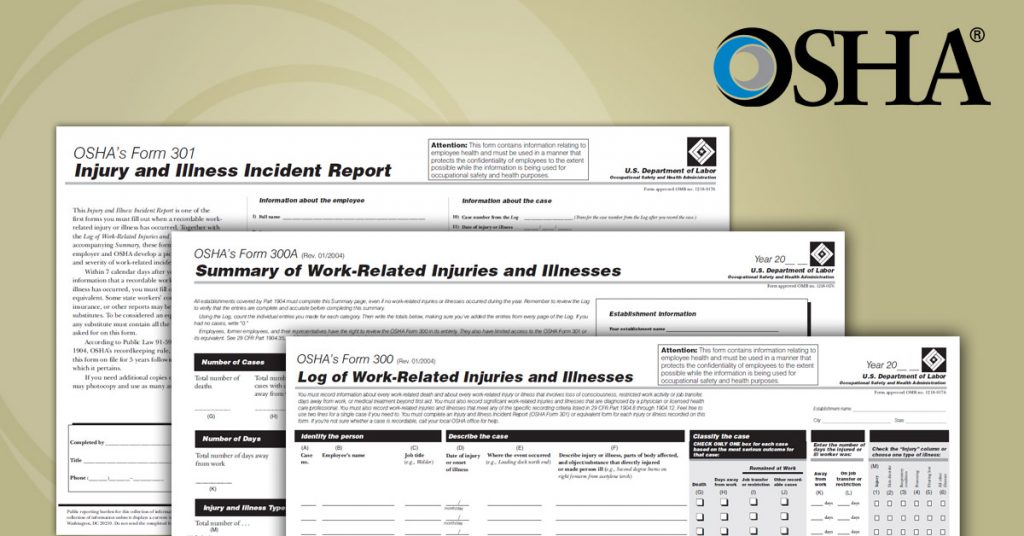The OSHA 300 log is a record-keeping tool that is used by many employers in the United States to track workplace injuries and illnesses. It is required by the Occupational Safety and Health Administration (OSHA), a federal agency that sets and enforces safety and health standards in the workplace.
The purpose of the OSHA 300 log is to help employers identify patterns and trends in workplace injuries and illnesses, so that they can take steps to prevent future incidents. It also serves as a way for employers to keep track of the types of injuries and illnesses that are occurring in their workplaces, and to track the actions that they are taking to address these issues.
To use the OSHA 300 log, employers must record any work-related injury or illness that results in one or more of the following:
- Death
- Lost workdays
- Restricted work activity or job transfer
- Medical treatment beyond first aid
- Days away from work
Employers must also record any work-related injuries or illnesses that are diagnosed by a licensed health care professional, even if they do not meet the above criteria.
The OSHA 300 log includes several different sections that must be completed for each injury or illness. These sections include:
- The date of the injury or illness
- The employee’s name and job title
- The location of the injury or illness
- A description of the injury or illness
- The part of the body that was affected
- The type of injury or illness (e.g. strain, sprain, fracture, etc.)
- The source of the injury or illness (e.g. machine, equipment, etc.)
- The object or substance that caused the injury or illness (if applicable)
- The type of treatment that was received
Employers are required to keep their OSHA 300 logs on file for at least five years, and must make them available for review by OSHA inspectors upon request.
In addition to the traditional paper version of the OSHA 300 log, employers also have the option to use the OSHA Injury Tracking Application (ITA) to record and report their workplace injuries and illnesses. The ITA is an online tool that allows employers to electronically enter and submit their injury and illness data to OSHA.
One of the main benefits of using the ITA is that it can save employers time and resources by eliminating the need to manually complete and maintain paper records. It also allows employers to easily access and analyze their injury and illness data, which can help them to identify patterns and trends and take proactive steps to prevent future incidents.
To use the ITA, employers must first create an account and register their establishment. Once registered, employers can log in to the ITA and enter their injury and illness data for the current and previous calendar year. They can also update and correct their data as needed.
Employers are required to submit their injury and illness data to OSHA through the ITA if they meet certain criteria, such as having 250 or more employees or being in a high-hazard industry. However, even if they are not required to use the ITA, employers may still choose to do so as a way to streamline their record-keeping process.
It’s important to note that the ITA is not a replacement for the OSHA 300 log. Employers must still maintain complete and accurate records of their workplace injuries and illnesses, regardless of whether they are using the ITA or the paper version of the OSHA 300 log.
Overall, the OSHA 300 log is an important tool for helping employers to identify and address hazards in the workplace, and to create a safer and healthier working environment for their employees. The Injury Tracking Application is a useful tool for employers looking to efficiently and effectively track and report their workplace injuries and illnesses. By using the ITA, employers can gain valuable insights into their workplace safety and health performance, and take steps to create a safer and healthier working environment for their employees.
Contact us at info@tsgsafety.com if your company needs assistance with your OSHA 300 logs or the ITA.
Here is a link to the OSHA ITA: https://www.osha.gov/injuryreporting/ita/


